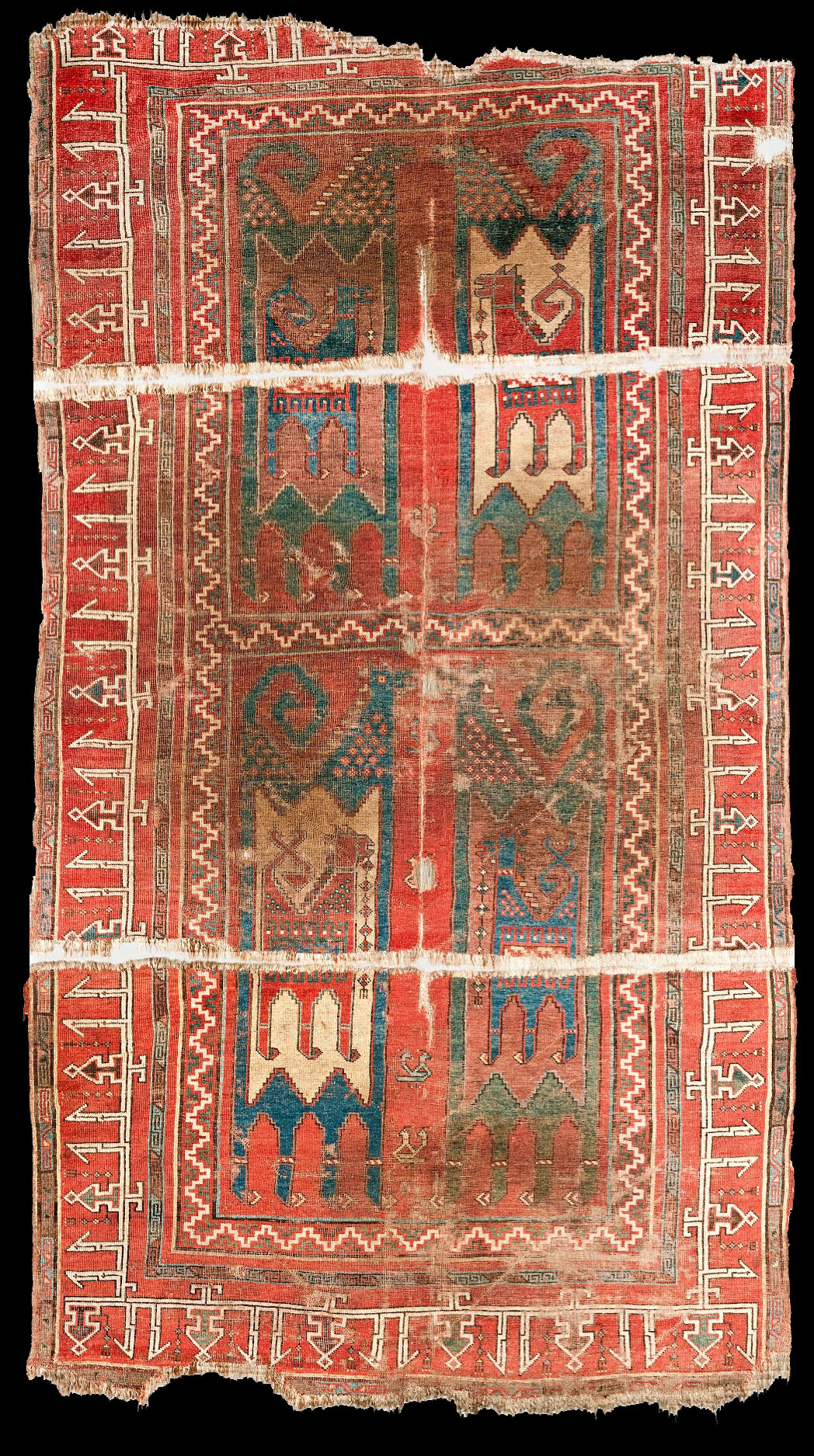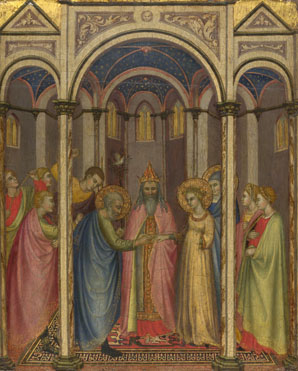|
Historical
Ilkhanid (Azerbaijan, Tabriz) / Seljuq (Anatolian) rug with animal design,
1250-1350 or 1300-1400| The Museum of Islamic Art, Qatar.
The rug was previously in the Kircheim collection (Orient Stars). Anatolia
or Caucasus
The rug has
been carbon 14 dated to 1190-1300 and 1319-1440 (two different tests)
Description
Although this enigmatic and imposing carpet
no longer imparts the message its designers meant it to tell, we know that
it’s a well-travelled piece. Probably made in Anatolia during the Seljuk
period (?), it was preserved for many years in Tibet (?), where it came to light
during the large-scale dissolution of Buddhist monasteries in the 1990s
(?).
Even if we can no longer understand the original meaning, we can certainly
appreciate the beautiful sense of balance and order within the design. The
colour scheme is simple – navy blue, wine red, forest green and a creamy
shade of white – but the way in which the weaver uses them produces a
striking visual effect. The four animals form two pairs based on colour,
one outlined in green with a red centre, and the other blue with a cream
centre, and each half of the pair is diagonally opposite the other. These
larger creatures are ‘pregnant’ with miniature versions of themselves,
once again in contrasting colours. These massive forms are offset by small
stylized birds which flit between them, as well as by a spiky border which
references Arabic calligraphy.
Are these animals a distant echo of pre-Islamic Central Asian practices?
Are they supposed to ward off evil spirits, or carry the dead to the next
world? We can only guess, and this carpet isn’t telling.
رغم أن هذه السجادة الغامضة والمهيبة لم تعد تنقل الرسالة التي أراد مصمموها
إيصالها، إلا أننا نعرف أنها سجادة تنقلت في أماكن عدة. يُرجح أن تكون قد
حيكت في الأناضول خلال الحقبة السلجوقية، ومن ثم تم حفظها لسنوات طويلة في
التيبت عندما ظهرت إلى العلن خلال عملية تفكيك واسعة النطاق للمعابد البوذية
في تسعينات القرن الماضي.
ورغم أننا لسنا قادرين حالياً على فهم المعنى الأصلي، إلا أن بوسعنا حتماً
تقدير ذلك التوازن والنظام الجميل في التصميم. استخدام الألوان في هذه
السجادة بسيط ـ أزرقٌ نيلي وأحمرٌ قاني وأخضرٌ داكن وتدرجات من اللون الأبيض
القشديّ ـ إلا أن الطريقة التي اتّبعها النسّاج في دمج هذه الألوان كانت
نتيجتها أثراً بصرياً مذهلاً. تشكل الحيوانات الأربعة زوجين اثنين بحسب اللون.
الزوج الأول محاطٌ باللون الأخضر، بينما يوجد اللون الأحمر في المركز. أما
الزوج الثاني، فيُحيط به الأزرق مع اللون الأبيض القشديّ في الوسط، وكل نصف
من هذين الزوجين متعاكسٌ قطرياً مع نظيره. تحمل هذه المخلوقات الكبيرة نسخاً
منمنمة لأشكالها نفسها، بألوان متعاكسة أيضاً. إلى جانب هذه الأشكال، توجد
طيورٌ منمقة تحلّق بينها، بالإضافة إلى إطار حاد الأطراف يشير إلى فن الخط
العربي.
فهل أشكال الحيوانات هذه تذكر بالأساليب الفنية التي كانت سائدة في آسيا
الوسطى في الحقبة التي سبقت الإسلام؟ أم أن مهمتها طرد الأرواح الشريرة أو
نقل الموتى إلى العالم الآخر؟ ليس بوسعنا سوى التخمين بما أن هذه السجادة لا
تكشف عن أسرارها.
Dimensions:
Length: 311 cm
Width: 164 cm
See on institution's site: http://www.mia.org.qa/ |




